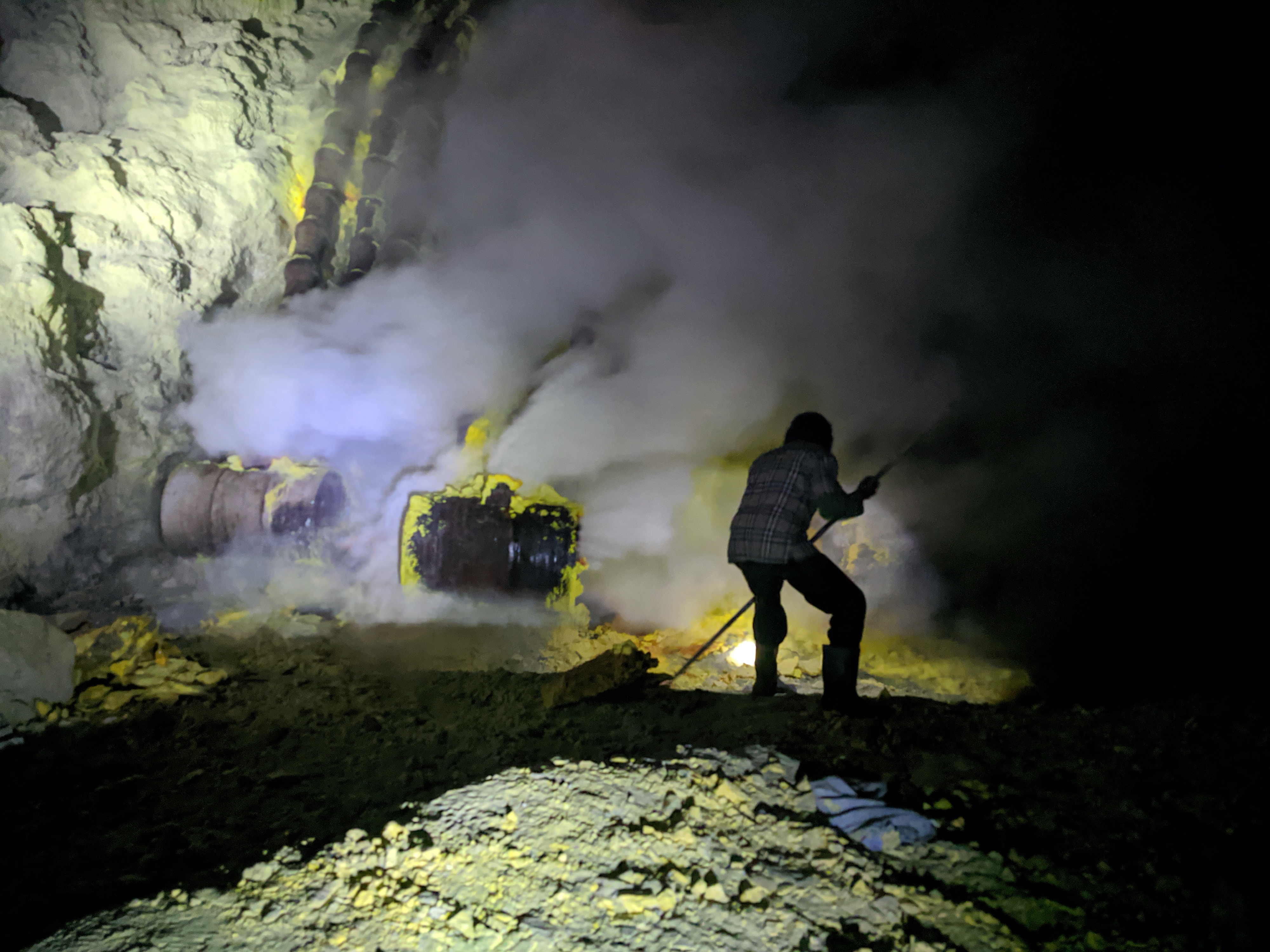Can you imagine how tough is to fight sulphur gas then carry 70 kg of solid sulphur on your shoulders afterwards to get money? This is how every sulphur miner has to deal with every time they do their job here at Ijen Crater, an active volcano. Despite its natural beauty, there are several local villagers who work as sulphur miners for their families.
People has to realise that every active volcano releases gas which contains of sulphur. Sulphur is utilised for various aspects of life, such as gunpowder, medicine, soap, and also sugar whitener. To get it, there are people who are willing to deal with any kinds of risks. These miners still do their job traditionally.
They start to work around midnight, and some others start in the morning. They have their own crowbars, baskets, and trolleys to do it. They also have to bring and wear gas masks. However, some of them do not have gas masks, so they have to put wet cloth on their faces while they are working.
These sulphur miners have to go up to the crater rim and then walk down into the crater to reach the fumarole. On this fumarole there had been special pipes installed to condense the gas quickly. The liquid sulphur flows through these pipes and go down to some spots where the miners should wait about 15-20 minutes until the liquid sulphur is solidified. They use crowbars to crack this solid sulphur into pieces and then collect them into baskets. After they feel like it's heavy enough, they will carry these baskets which full of solid sulphur up to the crater rim. They can do this 4 times per day. They collect these sulphur pieces onto trolleys and they will bring them down to the sulphur storage which is located around Ijen Crater's car park.
Every visitor will see sulphur miners whenever they visit Ijen Crater. Some of these miners even sell souvenirs which are made of sulphur. Visitors can also take pictures of them or with them but they need to ask them first if they are convenient.
The first generation of sulphur miners were from the year of 1786. They were actually prisoners from Sukorojo Prison in Banyuwangi who had to do their sentence at Ijen Crater after the Dutch Indies goverment that ruled Banyuwangi Regency at that time had discovered that they could get sulphur from Ijen Crater. The following year, the goverment began exporting sulphur from here as a mixture for gunpowder and medicine.


